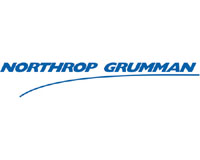| . |  |
. |
Manama, Bahrain (UPI) Jun 19, 2009 The Arabian Sea, one of the world's busiest shipping routes since ancient times and now a vital oil artery between the Gulf and Asia, is set to become an arena of competition between India and China. Both Asian giants, which need all the energy supplies they can get their hands on to fuel their mushrooming economies, are building long-range naval forces to protect their economic lifelines in the Arabian Sea, on the eastern flank of the Middle East. The United States has been deploying forces in the Arabian Sea region since World War II to protect its oil supplies, so the moves by India and China to shield their energy and political interests will eventually challenge -- if not collide with -- the United States' naval domination of the Gulf as well as U.S. influence in the Indian Ocean and even as far east as the South China Sea. That will add to the Middle East's strategic complexities at a time when the stampede for energy supplies, a finite resource, is escalating sharply, and U.S. blunders across the Middle East and South Asia have opened the door to the region for China and India. "I think most security experts are looking at this very closely," said Gal Luft, executive director of the Institute for the Analysis of Global Security in Washington. "I don't know that this is something the U.S. particularly likes." Both India and China are driving to build aircraft carriers as the core of their power-projection capabilities in the Arabian Sea, until now a U.S. naval preserve. Russian media reported April 21 that Moscow expects to deliver the former Soviet navy aircraft carrier Admiral Gorshkov to the Indian navy within three years. Acquiring the 45,400-ton Kiev-class carrier, to be renamed Vikramaditya, will give the Indians considerable reach and firepower in the Arabia Sea. They plan to acquire two other carriers. New Delhi agreed to buy the Admiral Gorshkov in 2004 for the price of its conversion and refit, then estimated at some $974 million, with its complement of 16 MiG-29KuB fighters costing an additional $525 million. But the costs have escalated sharply, and Russia's defense export agency, Rosoboronexport, has demanded $2.2 billion to $2.9 billion to complete the refit at the Sevmashpredpriyatie shipyard. India's Defense Ministry said earlier this month that it will send a team to join the carrier for its sea trials prior to delivery -- three years late. The first group of Indian navy pilots has already completed training on the MiG-29K. India also has the former British Royal Navy carrier Hermes, renamed the Viraat, but it is near the end of its service life, and New Delhi will have to move fast if it wants to acquire modern carriers. For their part, the Chinese, who are accelerating the expansion of their military forces that now includes a navy with 860 warships, appear determined to build a carrier fleet, an unmistakable sign of their ambition to become a world power and to protect their vulnerable and ever-expanding trade routes as China becomes increasingly reliant on imported raw materials. Following double-digit increases in China's defense spending over the last 15 years, Rick Fisher of the International Assessment and Strategy Center and a specialist on China's military, noted recently, "I'm convinced that before the end of this decade we'll see preparations for China to build its first indigenous aircraft carrier." In the meantime, the Chinese navy -- known as the People's Liberation Army Navy -- has acquired the Varyag, a former Soviet Kuznetsov-class carrier, from Ukraine, which obtained it after the breakup of the Soviet Union. The vessel, renamed Shi Lang, is currently moored at the port of Dalian in northern China, and talks are under way for Beijing to purchase 50 Russian Sukhoi Su-33 fighters for the carrier for an estimated $2.5 billion. Share This Article With Planet Earth
Related Links Naval Warfare in the 21st Century
 Northrop Grumman Submits Bid For US Navy CANES
Northrop Grumman Submits Bid For US Navy CANESSan Diego CA (SPX) Jun 09, 2009 The team led by Northrop Grumman has submitted its bid for the U.S. Navy's Consolidated Afloat Networks and Enterprise Services, or CANES. CANES will streamline and update shipboard network systems to improve interoperability and affordability across the fleet. The U.S. Department of Defense issued a request for proposals April 2 for the program, which is valued at more than $1.5 billion ... read more |
|
| The content herein, unless otherwise known to be public domain, are Copyright 1995-2009 - SpaceDaily. AFP and UPI Wire Stories are copyright Agence France-Presse and United Press International. ESA Portal Reports are copyright European Space Agency. All NASA sourced material is public domain. Additional copyrights may apply in whole or part to other bona fide parties. Advertising does not imply endorsement,agreement or approval of any opinions, statements or information provided by SpaceDaily on any Web page published or hosted by SpaceDaily. Privacy Statement |